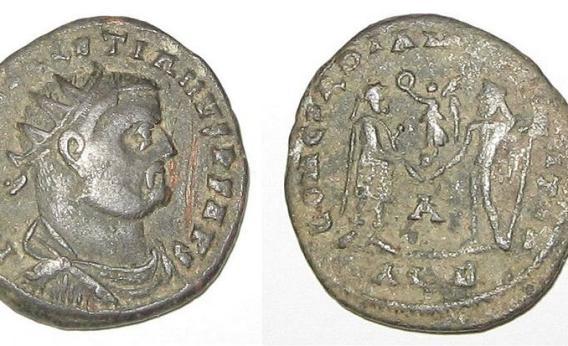Since the subject of inflation under Emperor Diocletian won’t seem to stop dogging Paul Krugman, I thought I might try to bring a little information to the table following Prόdromos-Ioánnis Prodromídis 2006 paper “Another View on an Old Inflation: Environment and Policies in the Roman Empire up to Diocletian’s Price Edict” which brings a valuable multidisciplinary perspective to the price level changes experienced by the Roman Empire during the third century.
As Prodromídis explains it, the inflation in question was really three separate trends that people sometimes run together.
In the first part of the century, the Roman Empire doesn’t have a bond market it can raise funds on so instead it finances budget deficits by coining money. This leads to positive inflation, but of a fairly normal non-ruinous sort in the 3-4 percent range. That’s about what America was doing during the Reagan administration and it’s perfectly consistent with prosperity.
Then comes the “Crisis of the Third Century” when for about fifty years starting in 235 AD the Empire is wracked by invasion and civil war. This leads to a large increase in the price level primarily because of negative shocks to the real economy. Political disruption sharply reduces the quantity of market transactions conducted with money, leaving a higher ratio of coins to transactions and higher prices. By the same token, if marauding barbarians were to cut the Northeast Corridor off from the Farm Belt, the price of agricultural goods would skyrocket for reasons that are basically non-monetary in nature.
Then, just when the Emperor Diocletian has brought political stability back and is in fact making progress on solving the underlying problem, he decides to do something weird:
At any rate, the received wisdom is that, overall, the overwhelming/unprecedented increase in the money supply (especially ‘silver’/bronze issues) in the reign of Diocletian, eventually brought about pronounced price increases (Schwartz, 1973; Duncan-Jones, 1982; Harl, 1996). But, this is not the full story; though the second part of it, is perhaps not widely known or recognised for its inflationary impact: In 301, Diocletian apparently issued a Currency Edict, effective September 1st, doubling the face value of the silver and cop- per issues (Erim et al., 1971; Whittaker, 1980; Bagnall, 1985; Lo Cascio, 1996; Rathebone, 1996; Harl, 1996; and the literature mentioned therein). Perhaps he hoped to raise the purchasing capacity of his (military and administrative) staff or make the possession of these coins more attractive and influence the ‘unfreezing’ of the out- standing precious metal (gold) that was held in private stores.
Whatever it is he hoped to accomplish, the result was a final large one-time increase in the price level that left the legacy of Diocletian the Inflator.
Currency reforms of the sort Diocletian undertook still happen sometimes in the modern era, but they almost always go in the other direction. When a country has in the recent past suffered a bout of serious inflation that’s just come to an end, sometimes the government will choose to put a mark on the new regime by basically striking a zero or two off the old currency. So in 1960, France introduced a New Franc and announced that one New Franc was worth 100 Old Francs, and that 1 Franc Coin of the old vintage could stay in circulation as one New Centime. You could describe the impact of that switch as a giant one-off deflation, but that’s a pretty misleading way to think about it.
